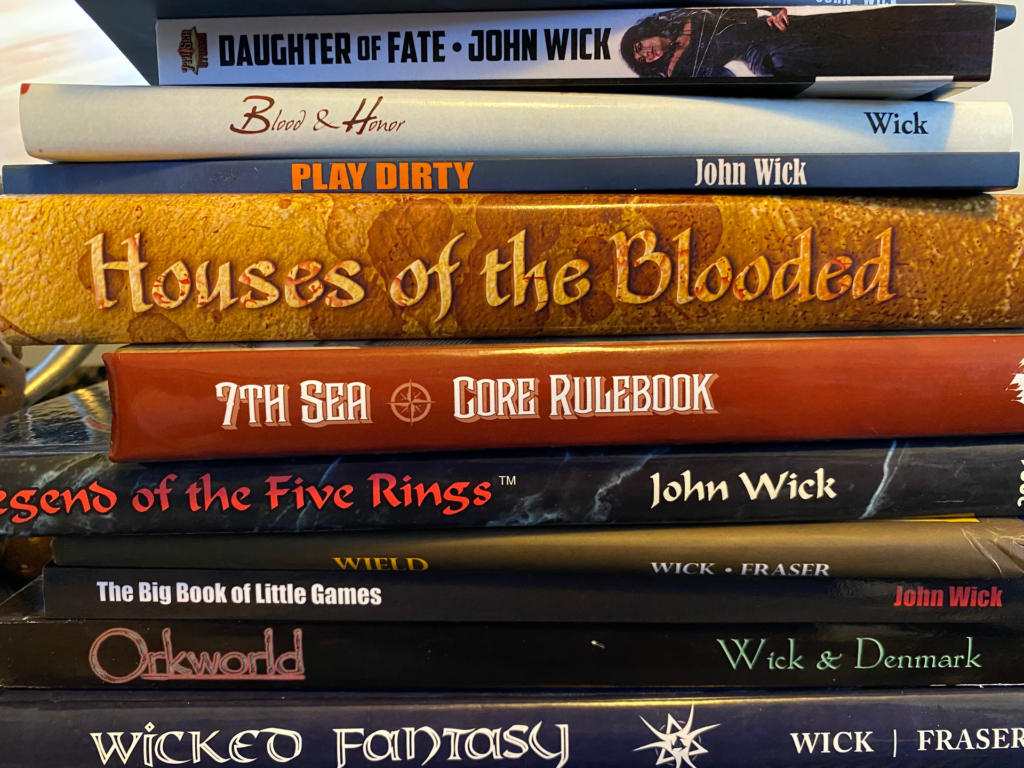-
Unreview: Suspiria
Unreview Rules: I have to pay for it, I have to like it, I do my best to use E-Prime Go see it. I mean what I say. Go see it. Don’t read reviews, don’t listen to anyone else. Just go see it. Sit in a dark theater—alone or with someone you trust—and…
-
Unreview: Bohemian Rhapsody
Unreview Rules: I have to like it, I have to pay for it, I do my best to use E-Prime when talking about the thing itself I write “unreviews” to highlight the subjective nature of reviews in general, and as you’ll see, talking about this film exposes the fact that I cannot be “objective” about…
-
Unreview: Halloween (2018)
Let’s review the Unreview Rules: I have to like it, I have to pay for it, I try my best to use E-Prime. See that first rule? Read it again. All right. Let’s talk about Halloween. I mean, the movie that scared me witless when I was ten years old. See that frame…
-
Santa Vaca: “Fun Happens Between the Rules”
(From the introduction to the Santa Vaca Companion—coming soon.) I have a lot of respect for James Ernest. We tend to hang out at conventions and spend a lot of time talking about games and everything but games. We agree, we disagree, we argue, but there’s always respect. I have never felt as if James…
-
Play Dirty: DemonXBunny
(This is a slightly edited version of the Play Dirty episode published in Wicked Words #11, which you can get a copy of here! Support my Patreon for only $2.99 per issue. Your subscription also includes ALL back issues. Every issue of Wicked Words contains one Play Dirty episode plus additional gaming/fiction stuff!) …
-
The Grey Crane
If you play roleplaying games, you owe Greg Stafford. You may not even know it, but you do. Greg was brilliant. He was ahead of his time. You know the Stafford Rule? Every game designer knows the Stafford Rule: “If you believe you’ve come up with a clever mechanic, Greg Stafford already did it.” You…
-
Ten Years Ago: Santa Vaca & Game Balance
I wrote the following essay ten years ago (2008). I reprint it here without edit or revision. The first time I ever mentioned the phrase “santa vaca” in conjunction with D&D. Dungeons & Dragons 4th Edition was on the verge of release and after hearing so many people talk about “game balance” as the primary design…
-
Unreview: A Simple Favor
Unreview Rules: 1) I must like it, 2) I had to pay for it, 3) I do my best to use E-Prime. I love a movie that refuses to fit genre stereotypes but uses them to its advantage. I also hate genre. Movies that defy genre with a unique and compelling voice always bring me…
-
Finally, Santa Vaca
So, I did a hack. Begin the jokes now. “A hack did a hack.” There, I beat you to it. When I say, “I did a hack,” I mean I did a hack of the world’s most famous RPG. This has been years in the making. I had the…wait. Stop. Let’s start over. Just below, you…
-
Unreview: Adjustment Day
Normally, my rules for an unreview include an attempt to use E-Prime. In other words, I try my best to avoid using any iteration of the verb “to be.” Let me start this unreview by breaking that rule. This shit is mean. I mean bleak. I mean if the Red Wedding got you to throw…
